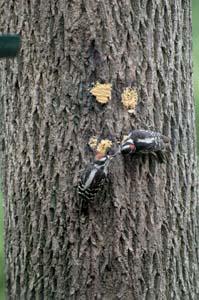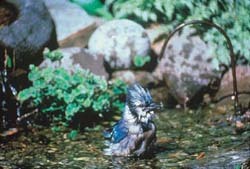How to Transition with the Birds
Here are some ways to keep the birds coming to your yard this month.

Food to Young - Young to Food
At the beginning of the month, many backyard nesting birds are taking high-protein foods to their chicks on the nest. As the month progresses and nesting finishes, watch for parents bringing their young to your feeders teaching them where to find food and how to eat it. They are looking for fats, proteins and calcium in foods like Jim’s Birdacious® Bark Butter® as well as the fats and proteins of our WBU No-Mess Blend.
Nesting Ending - Molting Beginning
As nesting is ending, molting is beginning and high-protein and high-fat foods will be in very high demand. Young birds need these for growing into adults. Adult birds need them for changing out their feathers. Offer foods like shelled peanuts or peanuts in the shell, mealworms, No-Mess Blend, sunflower chips, Nyjer® and Bark Butter.

Wet - Dry
Water is often more plentiful early in the month and begins to become more scarce toward the end as the temperatures rise. Be sure to have a clean, reliable water source, like a bird bath, so birds can bathe and drink. To make water sources even more attractive, get the water moving with a dripper or waterfall.

Singles - Multiples
Hummingbirds often seem scarce at feeders early in the month. However, as the month progresses, it seems there are more visits or even more birds. Some of these may look a little ragged. These are the young just off the nest. They are still growing their feathers and looking for quick-energy drinks at feeders. This is a great month to add a second (or third) feeder in a different part of your yard to prevent a bully hummingbird from chasing others away.

